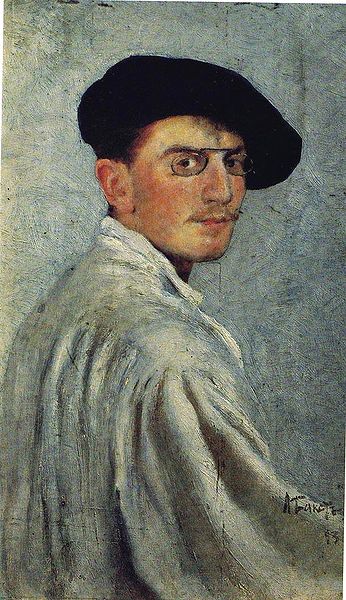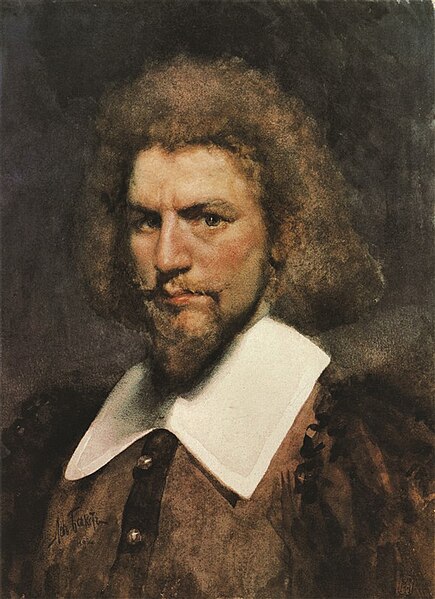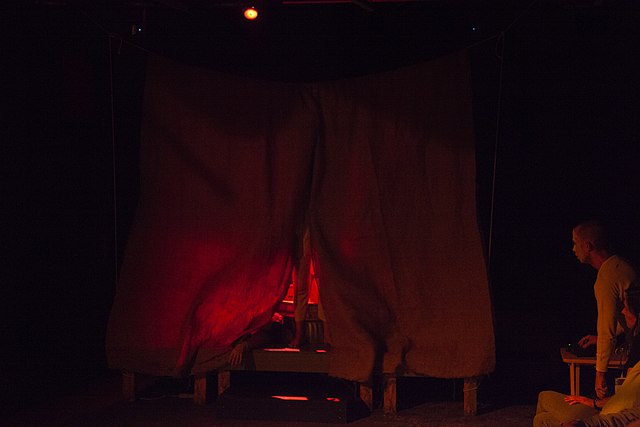Léon Bakst, born Leyb-Khaim Izrailevich Rosenberg was a Russian painter and scene and costume designer of Jewish origin. He was a member of the Sergei Diaghilev circle and the Ballets Russes, for which he designed exotic, richly coloured sets and costumes. He designed the décor for such productions as Carnaval (1910), Spectre de la rose (1911), Daphnis and Chloe (1912), The Sleeping Princess (1921) and others.
Bakst's Self-portrait, 1893, oil on cardboard, 34 × 21 cm, The State Russian Museum, St. Petersburg, Russia
Carnival in Paris in Honour of the Russian Navy; c. 20th-century.
Uriel da Costa (1897), an imaginary portrait of Biblical Criticism father and freedom of speech forerunner, was one of Léon Bakst earliest paintings
For Cléopâtre by Mikhail Fokine; 1910.
Scenic design, also known as stage design or set design, is the creation of scenery for theatrical productions including plays and musicals. The term can also be applied to film and television productions, where it may be referred to as production design. Scenic designers create sets and scenery to support the overall artistic goals of the production. Scenic design is an aspect of scenography, which includes theatrical set design as well as light and sound.
Set design model by Marcel Jambon for an 1895 Paris production of Giuseppe Verdi's Otello.
Set design for the New Zealand Opera's 2016 production of Mozart's Magic Flute
Scenic design for The 2010 Family Series, by Glenn Davis
A simple red curtain set design for the Oresteia presented by Stairwell Theater, 2019








